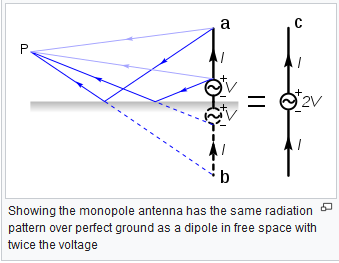I know that the directivity of the monopole is twice the directivity of the dipole because the transmitted power in case of the monopole is distributed only across a half of the space.
But why the input impedance of the monopole is half of the impedance of the dipole? Is there some proof to that?

